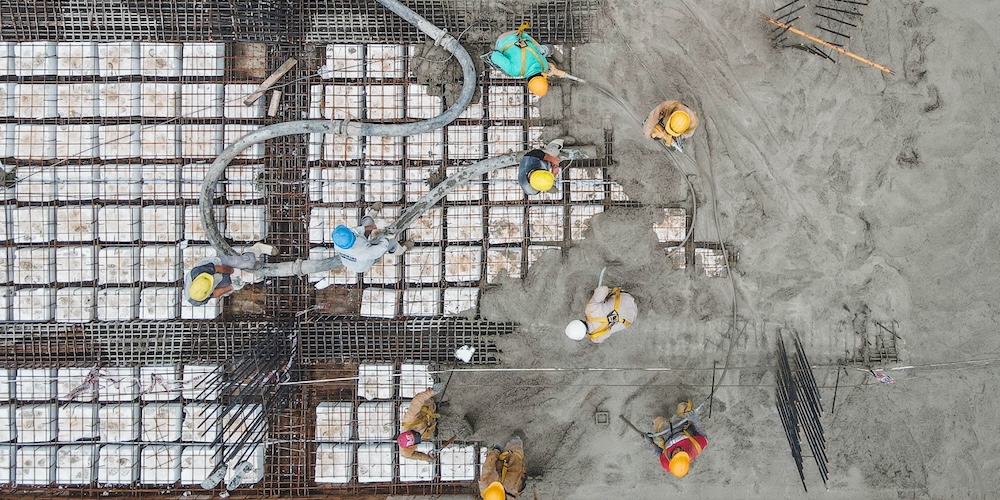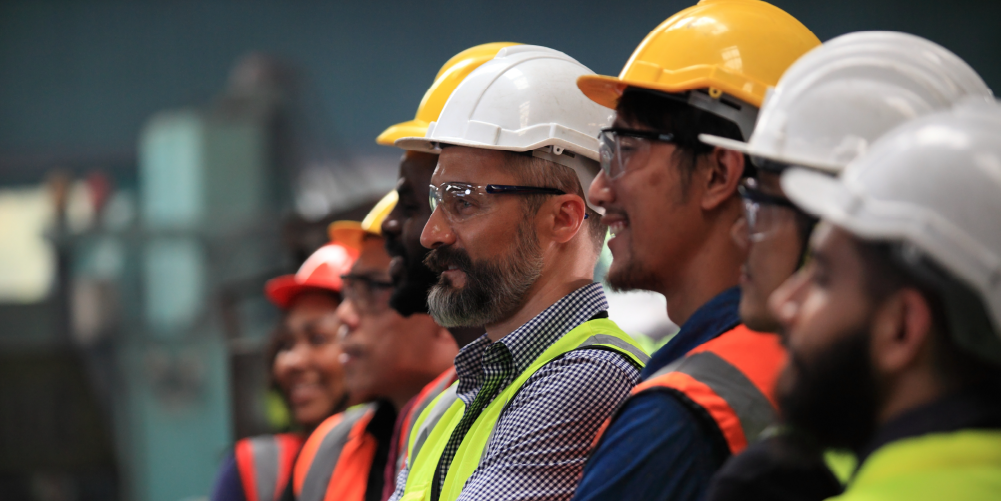— 11 min read
OAC Meetings: Improving Collaboration & Project Efficiency
Last Updated Jun 11, 2024
Last Updated Jun 11, 2024

Most decisions about a construction project require a seemingly endless number of considerations, from the budget to even the weather. Many of these decisions require input from the people footing the bill, the people who designed the project, and the people doing the work — most commonly the Owner, Architect and Contractor (OAC). That’s why many construction teams have OAC meetings.
OAC meetings are routine gatherings between owners, architects and contractors to make decisions, address issues, and complete tasks needed to keep a project moving forward. Effective OAC meetings can improve communication and problem-solving, and help ensure projects are built to the required quality standards. Additionally, these meetings are key in ensuring that projects are finished on time and within budget.
This article explores OAC meetings, including when they should happen, the topics they usually cover and how to use them to increase project efficiency.
Table of contents
The Purpose of the OAC Meeting
Owners, design teams and contractors are almost always required to provide input and approval on key tasks and changes, especially when those things have implications for budget, schedule and design. Without the OAC meeting, getting input and approval can involve tracking each stakeholder, repeating information over and over and constantly following up.
By routinely bringing key decision-makers together, OAC meetings streamline those processes in a thorough, efficient and collaborative way.
The topics covered at the meetings evolve over the course of the project, though the goal is always to keep the project efficiently and effectively moving forward. The table below explains which topics should be brought to the table for discussion at each phase of construction.
| Project Phase | OAC Meeting Focus |
| Preconstruction | Focus on breaking ground, permitting, scheduling, and identifying potential roadblocks. Materials and subcontractor procurement. |
| During Construction | Monitor progress and address issues that risk putting the project over budget or behind schedule. This includes RFI’s, submittals, procurement, change orders, or scheduling conflicts. |
| Near Project Completion | Coordinate and plan for closeout activities, such as the punch list, close-out submittals, commissioning or inspections. |
The Value of the OAC Meeting
Effectively facilitated OAC meetings foster elements that lead to a more efficient and cohesive construction team.
Collaboration
OAC meetings create a routine of taking care of business in a way that considers different perspectives and utilizes diverse expertise. This leads to more informed and efficient decision-making, as the people in the room are in charge of the budget, the plans and the schedule, respectively.
Transparency
These meetings can help people stay informed on the project’s progress and what’s needed to move it forward, even when the owner and architect might be far from the actual jobsite. OAC meetings allow the contractor to share the information and progress updates that owners and design teams are often seeking, but do it in an efficient way that further invests everyone in being part of the process.
Communication
Setting aside regular time to address issues and tasks as a team improves and streamlines communication. While this can help to address problems quickly and effectively, it can also help move communication beyond something that only happens when issues arise to something that can be done proactively to avoid delays and further barriers to completion.
How often should OAC meetings occur?
OAC meetings should happen throughout the entire lifecycle of a construction project and should be adjusted to meet the unique needs of pre-construction, construction and closeout. Most teams set a regular meeting schedule, often weekly or every two weeks. The regularity of the meeting depends on the demands of the project, its scale, and the preferences of the stakeholders.
It’s good practice to have the meeting as often as is feasible, as increased regularity usually increases communication and efficiency, while decreased regularity usually leads to meetings becoming long and difficult to get through.
Who should be at an OAC meeting?
Despite the name, OAC meetings usually include more than three people. Ideally, the owner, design team and contractor should have anyone with decision-making authority on the call. Some projects may even require specialized people to attend, such as government representatives for a government-funded project. These are some of the most common participants:
| Job Role | Responsibility During OAC Meeting |
| General Contractor (GC) | The GC or their project manager generally runs and coordinates the OAC meetings. They create and prioritize the agenda, send it to all necessary stakeholders, and ensure all action assignments. |
| Owner or Owner’s Rep | The owner or their rep should attend to provide decision-making, review proposed changes and raise any issues the owner has. These include changes in finishing details, design concerns or scheduling problems. |
| Architect | A firm will often assign an architect to be the construction administrator of a project. They attend the meetings to monitor the project’s progress, make sure its execution aligns with the plans and specifications, review and approve submittals, and ensure drawings are updated. |
| Engineer | The “A” for architect should more accurately be “D” for design team, as an engineer who is familiar with the project’s design systems will usually attend to monitor progress, address issues, and ensure installation aligns with the plans. |
| Project Engineer | Project engineers are usually very involved in the daily details of the project’s operations. They will often attend these meetings to share their expertise and perspective to provide context, improve problem-solving and be assigned action items. |
| Superintendent | The superintendent should usually attend meetings to help with issues that might impact the schedule, to assign tasks and to ensure the crew has what’s needed to complete their work. |
How To Prepare for an OAC Meeting
The GC or project manager should create an agenda by including and prioritizing issues that might impact the schedule, budget, or design and will require input from the owner’s team and the design team. These issues are often brought to the project manager during crew meetings or are found during routine inspections.
The agenda should reflect the phase of the project. For example, an OAC meeting happening during pre-construction might focus on material procurement, while one during construction might focus on site progress and schedule. Topics should be prioritized so that the most important ones are covered first, when people will be more focused and are sure to have plenty of time.
The GC usually sends the agenda before the meeting, often by email. The other attendees should review the agenda before the meeting so they are familiar with the topics, have completed all action items from the last meeting, and know if they need to bring particular documents or information.
What Happens at an OAC Meeting
OAC meetings can happen in-person or virtually. It’s not uncommon for part of the team to meet at the jobsite while someone else joins virtually, such as when an owner or architect lives or works far from the job site.
Typically, an OAC meeting should last about an hour. Meetings are easier to keep short when they are happening regularly. The GC facilitates the meeting and guides people through the agenda. Most topics will result in action items that should be assigned to specific project team members for completion.
The GC, or someone they’ve assigned, should be tracking all action items. After the meeting, the GC should share minutes, notes, and all assigned action items, usually in the same email thread in which they sent the invite.
Topics Covered at OAC Meetings
Not every issue that comes up during construction should be brought to the attention of the owner and the architect. A topic should be only brought to an OAC meeting if it requires review by the owner and design team or if it might have implications for the budget, schedule or design plans.
Typically, topics are initially brought up at crew meetings and elevated to the OAC meeting, though sometimes owners or architects will do a jobsite walkthrough and find issues they want to add.
The topics covered at an OAC meeting depend on what phase of construction the project is at and the nature of the project. Here are some common topics:
- Material procurement: Topics such as identifying materials that might have a long lead time in order to be acquired are common — particularly during pre-construction — but will also be brought up throughout the build.
- Job site logistics: These might include preparing for construction, identifying potential problems or acquiring necessary equipment.
- Speciality equipment: Equipment such as custom-made tools might be especially expensive or take a while to manufacture or procure.
- Schedule: This includes building the schedule, identifying milestones, resolving potential conflicts and ensuring the project can be done by the target date for completion. By the time construction begins, everyone should have a good idea of what’s going to happen and in what order. During construction, the schedule section of the meetings become more about progress updates and adjusting the schedule as needed.
- Contracts - Topics include items such as identifying, reviewing and hiring specialty contractors.
- RFIs (and design questions): Leading up to construction and during the build, the contractor might use OAC meetings to request updates on RFI’s from the architect or design team.
- Submittals: Throughout construction, contractors can use the meetings to verify submittals were done correctly and are approved as promptly as possible. This becomes even more important during closeout, when most closeout documents are submitted, such as operation and maintenance manuals, warranties, or commissioning reports.
- Change orders: These often require additional contracts, specs, plans and materials and need input and approval from the owner and design teams.
- Safety: This includes reviewing safety plans for each phase of the project, planning routine inspections and ensuring the project has the equipment and personnel needed to meet all safety requirements. Safety should be a topic through every phase of construction.
- Punch list items: During closeout, all participants in the OAC meeting will be communicating about, providing updates on, and ultimately reviewing the resolution of items identified during the final walkthroughs.
Stay updated on what’s happening in construction.
Subscribe to Blueprint, Procore’s free construction newsletter, to get content from industry experts delivered straight to your inbox.

5 Key Practices for Successful OAC Meetings
1. Have an agenda.
Agendas ensure the most important topics get covered, but they also ensure less important topics don’t get brought up and take valuable time. Items on the agenda should be prioritized and ordered so that the most important topics come first, when people are most focused and so they won’t be rushed at the end.
Agendas can also be shared before the meeting, which helps stakeholders know what is going to be covered and to come prepared with any documents or information.
2. Get the right people in the room
The OAC meeting only works if the right people attend. This is, of course, true for the owner and the design team, but especially for the GC. The project engineer and superintendents have specific knowledge of the project and can help problem solve and answer questions. Refer to the list above for who to invite.
3. Screen share
If the meeting is virtual, the project manager or whoever is facilitating should ensure they are able to share their screen. Pictures, schedules, and documents are helpful and reduce the risk of error that comes from simply describing something without a visual reference.
Visual references can also save time, as experienced contractors and architects are often able to see a picture of something and quickly diagnose a problem and come up with a solution.
4. Assign action items
Most topics and issues brought up at the meetings end with someone being assigned a task to address or resolve it. This might include a subcontractor fixing something they installed, an owner reviewing a submittal, or an architect updating a drawing.
Be clear with the items and review them at the end of the meeting so everyone knows what they are expected to do.
5. Take clear minutes and notes
OAC meetings usually cover a lot in one hour. Many of the decisions have major implications for cost, time, and quality. Many GCs will deputize someone to take clear notes and minutes which can be shared after the meeting as a reference, especially in regards to action items.
OAC meetings mean fewer surprises.
The temptation when working on a complicated project is to eliminate anything that blocks off an hour on an already packed calendar. However, a well-run, deliberate OAC meeting can save an immense amount of time and money, while also minimizing one of the things nobody wants on construction projects: surprises.
OAC meetings open lines of communication, foster informed decision-making and ensure important stakeholders know what’s going on — and feel empowered to help improve it.
Was this article helpful?
Thank you for your submission.
100%
0%
You voted that this article was . Was this a mistake? If so, change your vote here.
Scroll less, learn more about construction.
Subscribe to The Blueprint, Procore’s construction newsletter, to get content from industry experts delivered straight to your inbox.
By clicking this button, you agree to our Privacy Notice and Terms of Service.
Categories:
Tags:
Written by
Fernando Munoz
Fernando is a Product Designer at Procore. Previously, he worked as a Project Engineer and Project Manager at JE Dunn Construction. He also spent 5+ years as a fabrication and field engineer for CB&I, a global designer and builder of industrial storage facilities. Fernando holds a BS in Industrial Engineering from Louisiana State University and an MS in Civil Engineering, Construction Engineering & Project Management from the University of Texas at Austin. He lives in Austin, TX.
View profileJames Hamilton
70 articles
James Hamilton is a writer based in Brooklyn, New York with experience in television, documentaries, journalism, comedy, and podcasts. His work has been featured on VICE TV and on The Moth. James was a writer and narrator for the show, VICE News Tonight, where he won an Emmy Award and was nominated for a Peabody Award.
View profileExplore more helpful resources

Construction Manager vs. Project Manager: Comparing Leadership Roles
Skillful oversight of construction projects allows companies to deliver to owners on time and within budget. Construction managers (CMs) and project managers (PMs) provide the necessary supervision to keep projects...

Mastering Construction Resource Management: Strategies for Success
Completing construction projects successfully requires the careful management of various resources: labor, materials, equipment, money, time and information. Since these resources are finite, allocating them wisely is crucial for minimizing...

Managing Construction Projects in Different States: A Contractor’s Guide to Working Across State Lines
For many general contractors, taking on work in a new state or region can offer transformative opportunities for building a thriving business and a respected reputation. But managing projects is...

Construction Teamwork: Build a Solid Foundation With the Right Team
Construction is an industry of collaboration — no one person completes any job on their own. It could easily be argued that the most important skill for anyone in this...